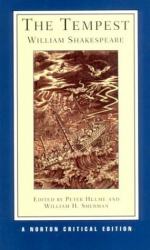|
This section contains 6,961 words (approx. 24 pages at 300 words per page) |

|
SOURCE: Vaughan, Virginia Mason. “‘Something Rich and Strange’: Caliban's Theatrical Metamorphoses.” Shakespeare Quarterly 36, no. 4 (winter 1985): 390-405.
In the following essay, Vaughan surveys four centuries of stage representation of Caliban—ranging from depictions of the character as a beast to an exploited indigene.
Since Caliban's first appearance in 1611, Shakespeare's monster has undergone remarkable transformations.1 From drunken beast in the eighteenth century, to noble savage and missing link in the nineteenth, to Third World victim of oppression in the mid-twentieth, Caliban's stage images reflect changing Anglo-American attitudes toward primitive man. Shakespeare's monster once represented bestial vices that must be eradicated; now he personifies noble rebels who symbolize the exploitation of European imperialism.
Caliban's malleability derives, perhaps, from his scant 180 lines and his ambiguous image in Shakespeare's text. In the 1623 Folio (where The Tempest was first printed), Caliban appears in the cast of characters as a “salvage and deformed slave.” Of...
|
This section contains 6,961 words (approx. 24 pages at 300 words per page) |

|


